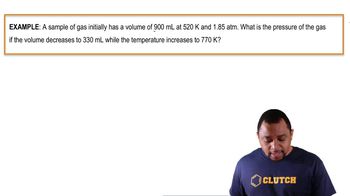Chemistry Gas Laws: Combined Gas Law definitions Flashcards
 Back
BackChemistry Gas Laws: Combined Gas Law definitions
1/12
Terms in this set (12)
- Combined Gas LawIntegrates Boyle's, Charles's, and Gay-Lussac's laws to relate pressure, volume, and temperature.
- Boyle's LawStates that pressure and volume are inversely proportional at constant temperature.
- Charles's LawIndicates that volume is directly proportional to temperature at constant pressure.
- Gay-Lussac's LawDescribes pressure as directly proportional to temperature at constant volume.
- PressureThe force exerted by gas particles per unit area on the walls of its container.
- VolumeThe amount of space occupied by a gas, typically measured in liters or cubic meters.
- TemperatureA measure of the average kinetic energy of gas particles, affecting pressure and volume.
- ProportionalA relationship where one quantity increases or decreases as another quantity does the same.
- Inversely ProportionalA relationship where one quantity increases as another decreases.
- ConstantA value that remains unchanged in a given mathematical relationship or equation.
- NumeratorThe top part of a fraction, representing the number of parts considered.
- DenominatorThe bottom part of a fraction, indicating the total number of equal parts.


